There’s a whole lot to love about big dogs, but if you’re after a companion who won’t hog the couch and leave you (and all your belongings) covered in fluff, then you’ll likely fare better with a lap-friendly sized companion.
Small dog breeds are easier to care for than their larger counterparts in many ways, although they do present some unique challenges. We’ll dive into the pros and cons of small dog breeds and share some of the ones you should consider below!
There are plenty of opinions about what exactly is considered a “small” breed — those accustomed to giant breeds like Great Danes would probably see any sub-100-pound woofer as “small!”
But for clarity’s sake, we consider small breeds those who weigh under 25 pounds.
We will, however, allow for a little wiggle room in some instances (up to 35 pounds), especially if the breed has all the qualities you would typically expect from a small woofer.
27 Best Small Dog Breeds
We won’t keep you waiting any longer! Here are 27 small dog breeds who make wonderful family companions. We’ve made sure to feature a range of breeds here. So, whether you’re an avid hiker or proud couch potato, you’re sure to find the pawfect furry sidekick.
1. Beagle

Bred to be a top-notch hunting dog, the beagle has a sniffer that very few pups can match. He excels at tracking, detection work, and finding every single fallen morsel from your cake. However, the beagle isn’t just famous for his hunting instincts; he makes an excellent family companion, with an affectionate, friendly, and easy going temperament.
Beagles are known for their goofy antics and can make wonderful playmates for kids. However, these small woofers are stubborn and fairly difficult to housetrain. They need an experienced and patient owner, who can maintain a positive, yet firm and consistent training approach.
Some beagles can weigh up to 30 pounds, but most dogs only weigh between 15 and 25 pounds and reach up to 15 inches tall.
2. Chihuahua

The Chihuahua is one of the smallest breeds out there, standing at only 5 to 8 inches tall. But he didn’t get the memo about just how small he is; he’s feisty, bold, and isn’t afraid to challenge any pup — yes, even those twice the size of him. He makes a great companion for those after “big dog personality” in a small, more manageable package.
This woofer is devoted, alert, and loves being by his family’s side. He is always up for a play session with his favorite humans and will keep your lap warm in the winter months. Chihuahuas come in a variety of forms, including two different coat variants: a short-haired smooth coat or a long wavy coat. Both coats are glossy and relatively easy to groom.
While the Chihuahua is intelligent, his feisty (bordering on stubborn) attitude can make training difficult. He’ll need persistent, firm training to keep any unruly behavior in check. He can also be reserved around strangers. Exposing him to a range of people from an early age will help him feel more at ease around strangers.
3. Pomeranian

This bundle of fluff is lively, curious, and energetic. He grows up to 7 inches tall and weighs between 3 and 7 pounds (yep, this is another pint-sized pup!). The Pomeranian is an incredibly affectionate breed, who gets along well with kids, though children should always be supervised while playing and taught how to safely interact with animals.
The Pomeranian is well-suited to moderately-active families who want a happy medium between an energetic pup and lap dog. While his coat is a work of fluffy art, it does need to be brushed regularly to keep the fur clear of tangles and mats.
4. Papillon
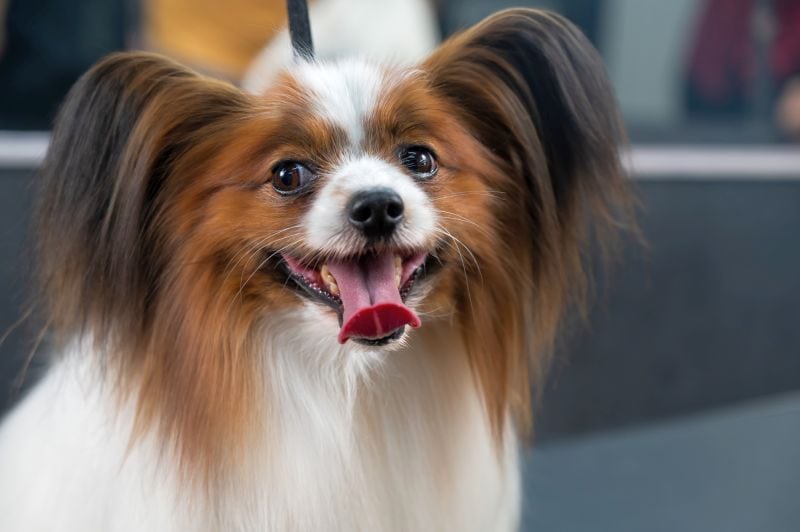
The papillon has the best ears in the doggy world. They’re fluffy, huge, and amplify his cuteness tenfold. Of course, he isn’t all looks and no substance; the papillon will make the pawfect best friend for those after an well-behaved, friendly, and happy-go-lucky four-footer.
The papillon grows up to 11 inches tall and weighs between 5 and 10 pounds. Despite his small size, he’s fairly energetic and loves to put his athletically-built body to good use. He’s also outgoing and considers virtually every stranger his friend. Plus, he’s ideal for first-time owners and is a fairly easy breed to train.
5. Maltese
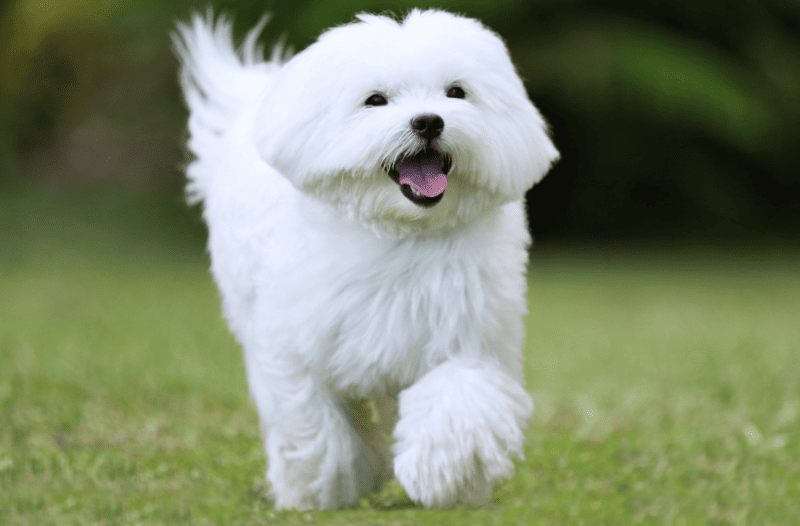
The Maltese has his roots in aristocracy, and while he certainly has all the grace of royalty, he doesn’t have the “high and mighty” attitude. These small white dogs are gentle, hardy, and easily adapt to just about any family (as long as his needs are met).
One thing’s for sure: He loves cuddles and will stick to your lap like glue.
Despite what his fluffy, long coat may lead you to think, the Maltese sheds minimally and is widely considered to be a “hypoallergenic” breed. However, do note that “hypoallergenic” doesn’t mean he won’t trigger allergies or that he doesn’t shed, it just means he sheds relatively little and is less likely to trigger allergies than other breeds.
6. Bichon Frisé
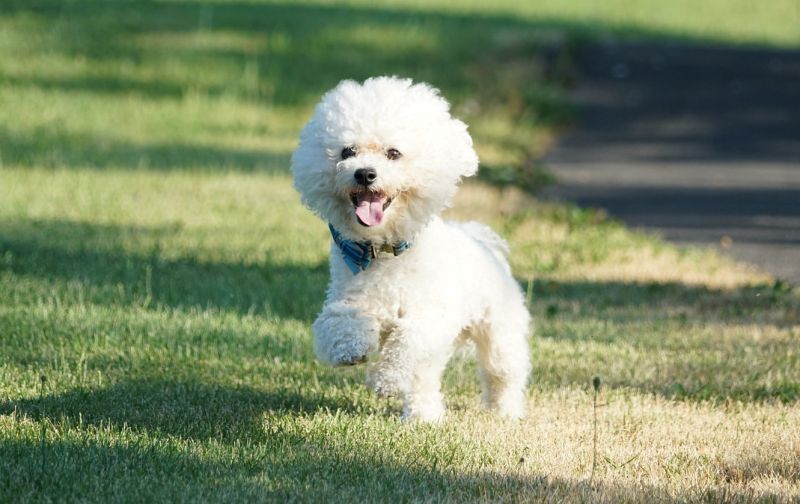
No, the bichon frisé isn’t a teddy bear. Yes. I know it’s hard to believe, but he is real and definitely worth your consideration! He’s peppy, playful, and extremely affectionate with anyone and everyone. He’s also adaptable and well-suited to apartment living and city areas.
The bichon frisé stands 9.5 to 11.5 inches tall at the withers and weighs less than 7 pounds. His teddy-like coat comes in various shades and is made up of soft corkscrew curls. He’s another “hypoallergenic” breed, but his coat does need daily brushing to keep it in good condition.
7. Havanese
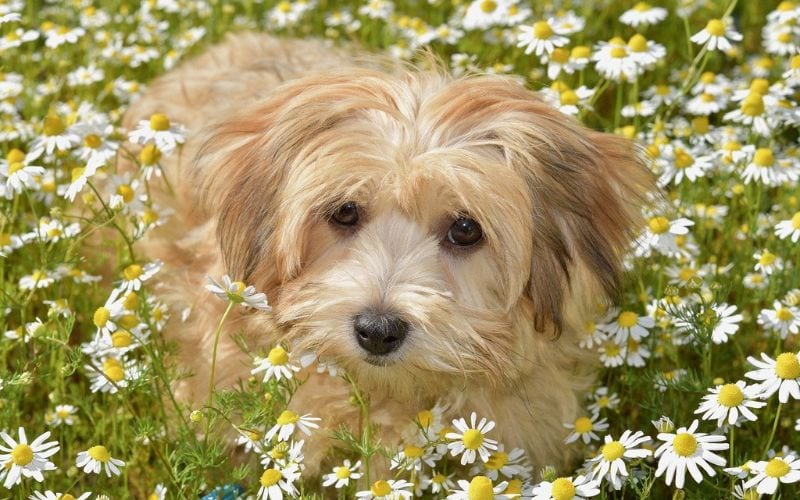
Puppy eyes are overrated — the Havanese’s smile is so endearing and irresistible that he could genuinely conquer the world with it, if global domination was ever on his agenda. Jokes aside, the Havanese is an adorable companion who is known for his goofy, outgoing, and gentle temperament. He grows up to 11.5 inches and usually weighs between 7 and 13 pounds.
Havanese get along well with young children, strangers, and other dogs. They’re fairly easy to train and thrive with an owner who will shower them with affection (and feed them a good Havanese dog food).
While playful, Havanese have delicate bodies that are prone to injuries. Children should be taught how to play with them safely. Havanese are long-lived dogs, with some even living for up to 16 years with proper care.
8. Boston Terrier
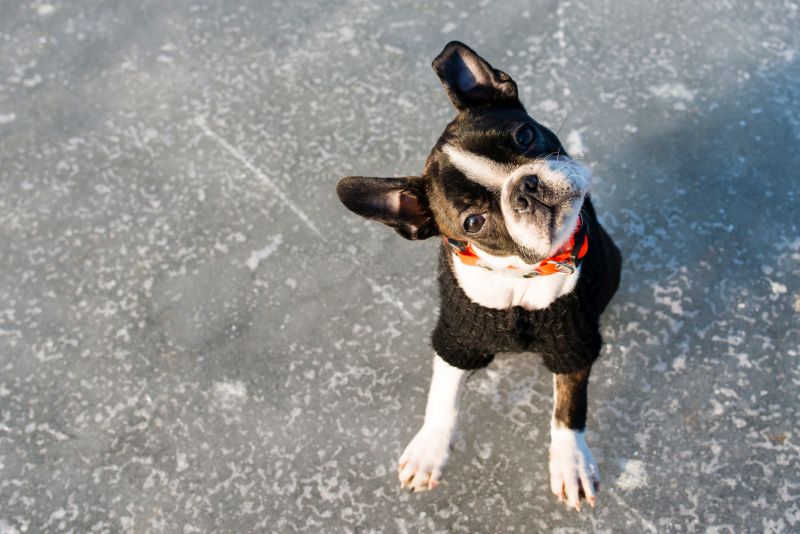
The most dapper small dog breed has to be the Boston terrier. He’s dressed up to the nines with a handsome, silky coat that resembles a tuxedo. The Boston terrier is friendly, lively, and highly intelligent. While he can pick up complex commands, he is fairly strong-willed and likes to do things his own way. He’ll need an owner who is willing to work with his head-strong attitude and be consistent with training.
Boston terriers form strong bonds with their family, and they are a great breed for young kids. However, they can be prone to health complications due to their flattened faces (more on this later).
Check it out: 13 Best Dog Foods for Boston Terriers!
9. Yorkie
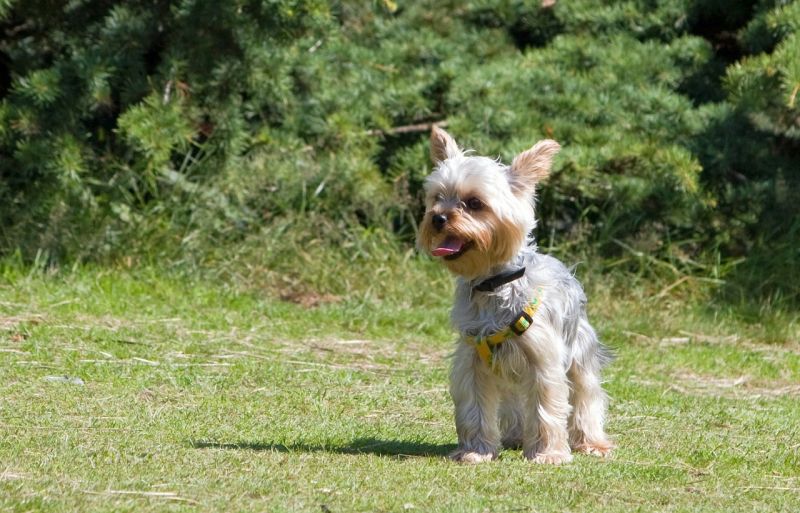
The Yorkie, aka Yorkshire terrier, may look like a cuddly floof ball, but his heart is that of a fearsome warrior; he’s bold, confident, and extremely courageous. He also makes an excellent watchdog, often alerting his owner to unfamiliar people and potential dangers. Of course, do keep in mind that his small size probably won’t deter strangers if they spot him through the window. His bark is definitely worse than his bite!
Yorkies grow up to 8 inches tall and weigh under 7 pounds. They have glossy single coats which require frequent brushing – at least three to four times a week. Some Yorkies may even need to be brushed twice a day, depending on coat length.
10. French Bulldog
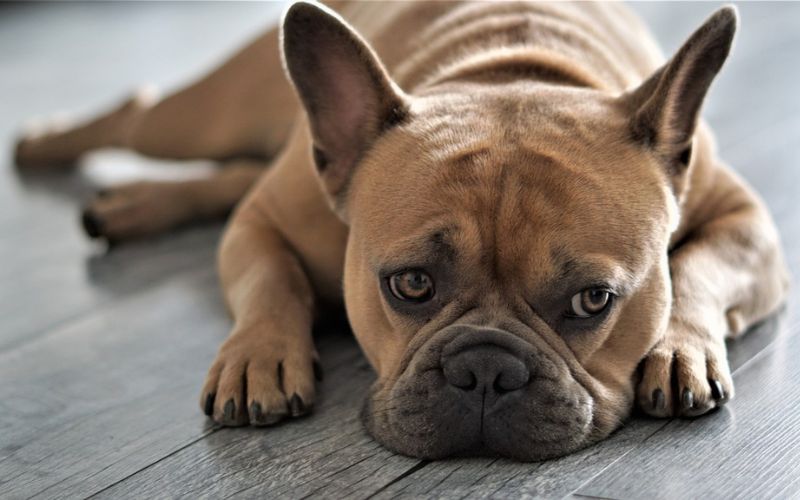
The French bulldog is the most popular breed in the United States, according to the American Kennel Club (AKC). And it’s easy to understand why: You can’t help but fall in love with this easygoing, playful, and even-tempered pooch. He grows up to 13 inches tall and weighs under 28 pounds.
French bulldogs have very distinct physical characteristics, including bat-shaped ears, skin folds, and short noses. Unfortunately, the qualities that make them so cute — such as their squishy, flattened faces — are the same things that make them prone to health complications.
Most French bulldogs only live for 10 to 12 years, despite their small size. They’ll require frequent vet checkups and extra caution should be taken in hot weather.
11. Cavalier King Charles Spaniel

The cavalier King Charles spaniel has a long history of warming the laps of royals. In other words, it is in his blood to keep your lap nice and toasty! When he’s not snoozing on your lap, you’ll find this Velcro dog showering you with kisses, demanding belly rubs, or following you from room to room.
The cavalier King Charles spaniel is graceful, gentle, and sports a majestic coat. He’s also adaptable and will be equally happy with an active owner or laid back, self-proclaimed couch potato. His most defining physical characteristic is his long, feathery ears.
12. Dachshund
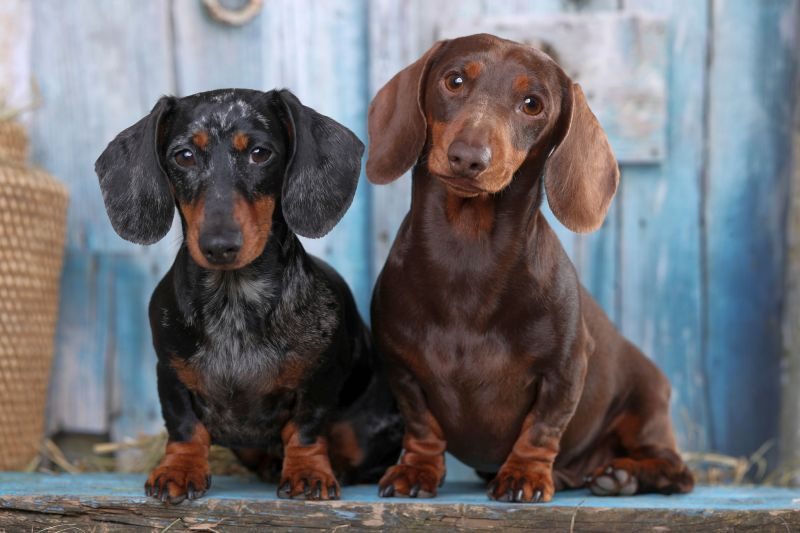
The dachshund has a lot more to offer than just his adorably unique looks. He’s also spunky, curious, and devoted to his family. Bred to chase and flush out badgers (“dachshund” actually means “badger dog” in German), he’s also extremely energetic. Most dachshunds need at least 60 minutes of exercise per day to stay happy and fit.
Despite his intelligence, the dachshund has an independent streak and can be difficult to train. A patient approach, high-value rewards, and breaking training into short sessions will set him up for success.
Dachshunds come in multiple types, including two size variations: standard and miniature. Standard dachshunds grow up to 9 inches tall and weigh 16 to 32 pounds, while miniature dachshunds stand 5 to 6 inches tall and weigh under 11 pounds.
13. Lhasa Apso
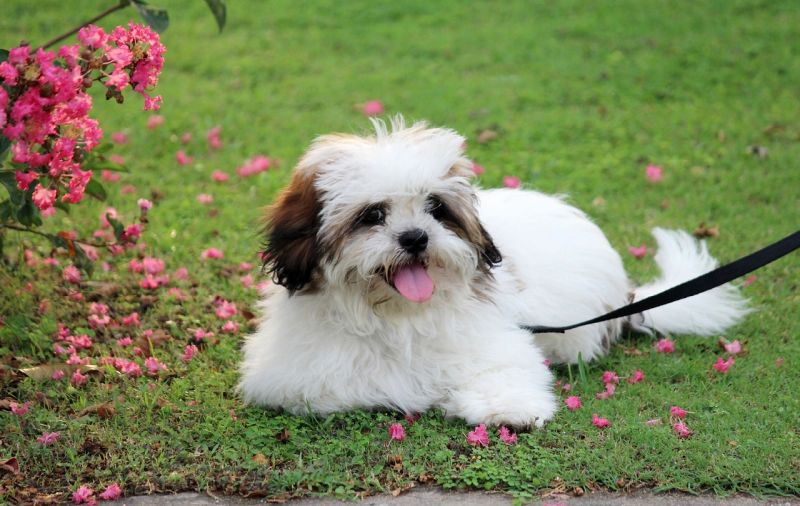
This tiny wagger might not be very well-known, but that doesn’t mean he isn’t worth your consideration! He’s playful, spirited, and boasts a lavish coat that’s total bliss to groom.
The Lhasa apso stands around 9 to 11 inches tall at the withers and weighs between 12 and 18 pounds.
The Lhasa apso makes an excellent watchdog thanks to his alert, observant, and protective nature. While these independent dogs can be standoffish around strangers, they’ll warm up to unfamiliar people quickly once he knows they won’t pose a threat.
14. Jack Russell Terrier
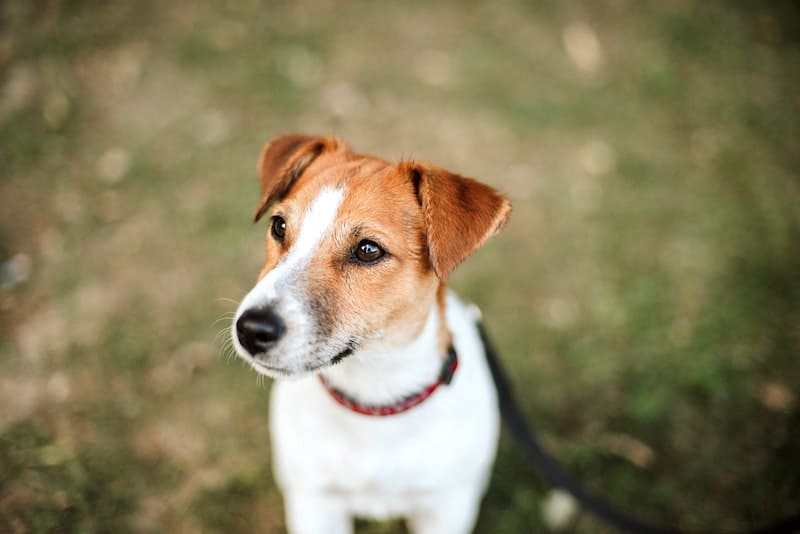
The Jack Russell terrier isn’t for the fainthearted; this woofer is a bundle of energy with a whole lot of attitude! He thrives with a family who can match his energy level and keep him adequately stimulated. With the right owner, the Jack Russel terrier makes a fiercely devoted companion who will brighten your days with his loyalty, affection, and clownish antics.
Jack Russell terriers reach 12 inches tall and weigh between 9 and 15 pounds. While dainty, they have athletic, muscular bodies and need at least an hour of exercise per day.
15. Pekingese
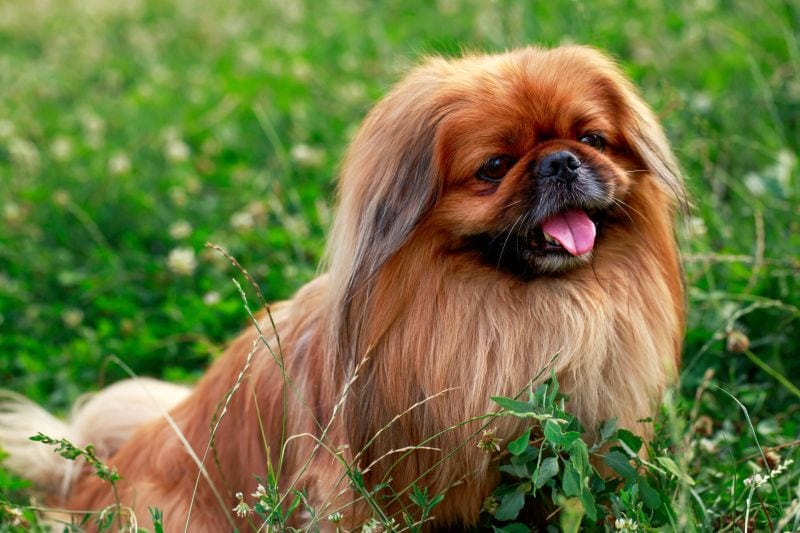
The Pekingese might be small, but he’s definitely made a huge impact on the world — this Chinese dog breed was initially bred to be companions for ancient imperial families! With his roots in royalty, it should come as no surprise that he acts in a graceful manner. He also looks the part too, with an elegant coat and dignified rolling gait.
The Pekingese grows up to 9 inches and weighs under 14 pounds. While he’s generally even-tempered and affectionate, he can be strong-willed at times. A tasty dog food, as well as a patient, consistent training approach, will keep him motivated and focused during training.
16. Pug
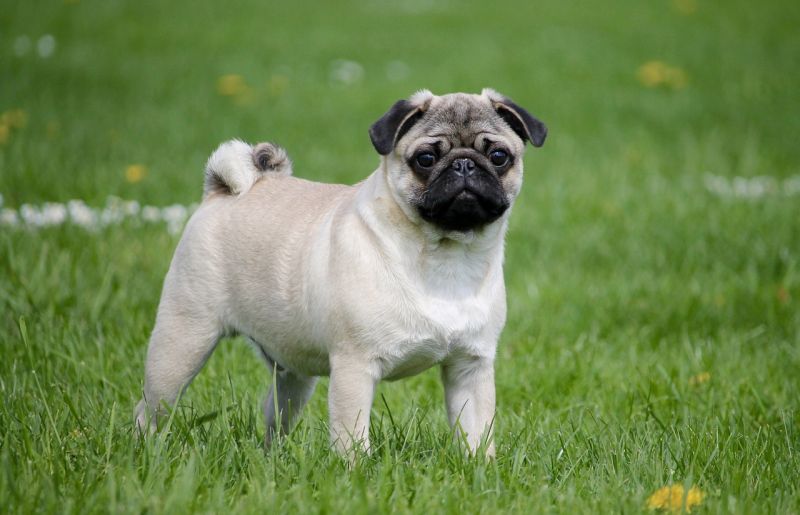
This little goofball will charm you with his endearing features, then leave you in stitches with his comedy show-worthy antics! He’s also incredibly affectionate and gets along great with children and other pets.
Pugs come in three colors — brindle, black, and fawn — and grow up to 13 inches tall. They’re generally a laid back breed, who prefers warm laps to wilderness hikes, making them well-suited to families who prefer quiet nights-in.
Pugs have silky smooth coats, but they do shed heavily. You’ll want to avoid this breed if vacuuming daily sounds like your worst nightmare.
17. Corgi
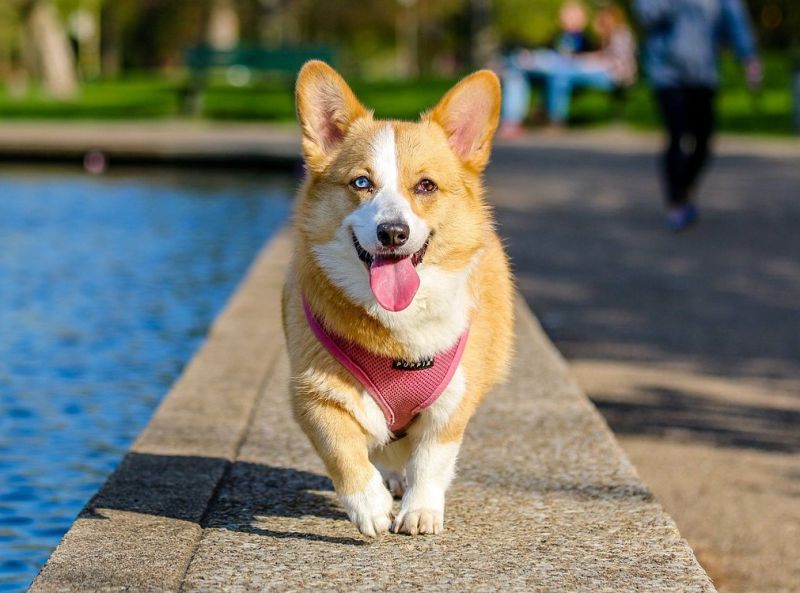
Corgis are friendly, outgoing, and even-tempered little herding dogs, who can adapt easily to different lifestyles. They stand 10 to 12.5 inches tall at the withers and are known for their adorable bodies (and iconic butt wiggles).
There are two official corgi types: the Pembroke Welsh corgi and the Cardigan Welsh corgi. Cardigan corgis are slightly larger than Pembroke corgis and tend to be a little more easygoing. Some corgis slightly exceed over 25 pounds, but we feel they still deserve a place in the “small” breed list due to their compact, short bodies.
The corgi makes a wonderful family companion. However, he does love the sound of his own voice and is known to be an excessive barker — not exactly ideal if you live in a thin-walled apartment block!
Check out some of the best corgi dog foods!
18. Scottish Terrier

Aptly nicknamed “diehard,” the Scottish terrier — like most small terrier breeds — is courageous, devoted, and has an unmatched iron will. He’s also alert and cautious of strangers, giving him all the qualities of an excellent watchdog.
While the Scottish terrier may act feisty around unfamiliar dogs and people, he’s anything but fierce in the home; he’s a big ol’ softie who loves attention, cuddles, and lap snoozes. However, he will need an owner who can work with his headstrong nature.
The Scottish terrier reaches 10 inches tall and sports a medium-length, wiry double coat.
He’s particularly renowned for having the best beard on the block; even Gandalf would be jealous of his beard game!
19. Shih Tzu
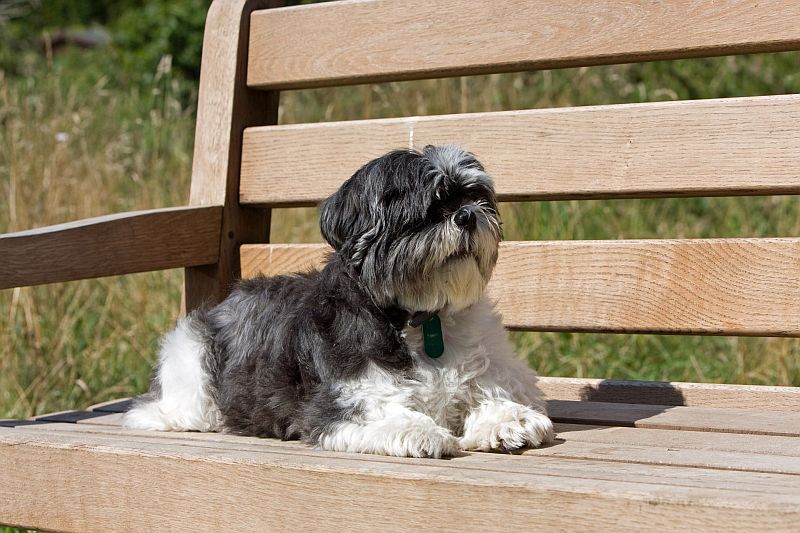
The shih tzu, aka the little lion, is a playful wagger who has a particular affinity for children. He makes the pawfect family companion as long as he is given plenty of attention. While he does have a mischievous side, he’s generally easy to train and well-mannered around other animals and people.
Shih tzus have an average height of 9 to 10.5 inches and weigh up to 16 pounds. They’re famous for being “Velcro dogs,” meaning it’s a given that they’ll follow you anywhere and everywhere. Do note that they are prone to separation anxiety though, so this isn’t a breed for those who spend a lot of time away from the home.
20. Basenji
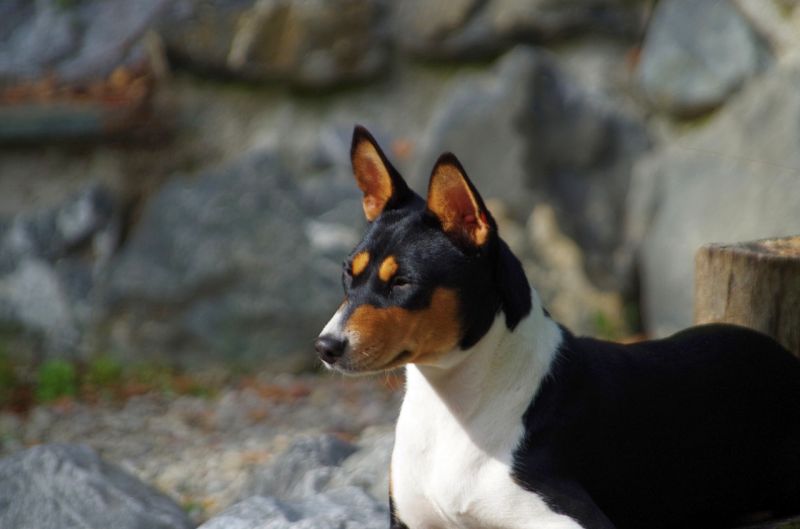
There are plenty of things to love about dogs; their endearing expressions, fluffy coats, and unconditional love for us. But incessant barking… isn’t one of their strong points. Luckily, there’s a breed out there that virtually never barks. In fact, he’s widely considered to be the “feline” of the doggo kingdom because of how quiet he can be!
Enter the basenji — this quiet woofer is intelligent, alert, and even-tempered. While he won’t come running at your beck and call, he’s incredibly loyal and protective of his owners. He reaches 17 inches tall and weighs between 22 and 24 pounds.
Do keep in mind that although he rarely barks, he does express himself in other ways, including whining and yodeling.
21. West Highland White Terrier

The westie is an adorable pooch with a sturdy build and distinctive white coat. He’s affectionate, gets along well with young children, and loves playing and hugs in equal measure. He grows up to 11 inches and weighs between 15 and 20 pounds.
Bred to be ratter dogs, west Highland white terriers are energetic and need at least an hour of exercise per day to thrive. Ideally, in the form of fun, active games like fetch. Most westies are reserved around strangers and incredibly protective, so they can make great watchdogs too.
22. Miniature Pinscher

The miniature pinscher has a reputation for being fearless, but he’s also a goofball who loves to play! He reaches 12.5 inches tall and weighs around 8 to 10 pounds. Most miniature pinschers also lead long lives, with an average life expectancy of 12 to 16 years.
Miniature pinschers sport short, shiny coats that are easy to groom. They’re great companions for active families since they have high energy levels and love to exercise. They do tend to be a vocal dog breed though, so keep that in mind if you live in a cramped city area.
23. Affenpinscher
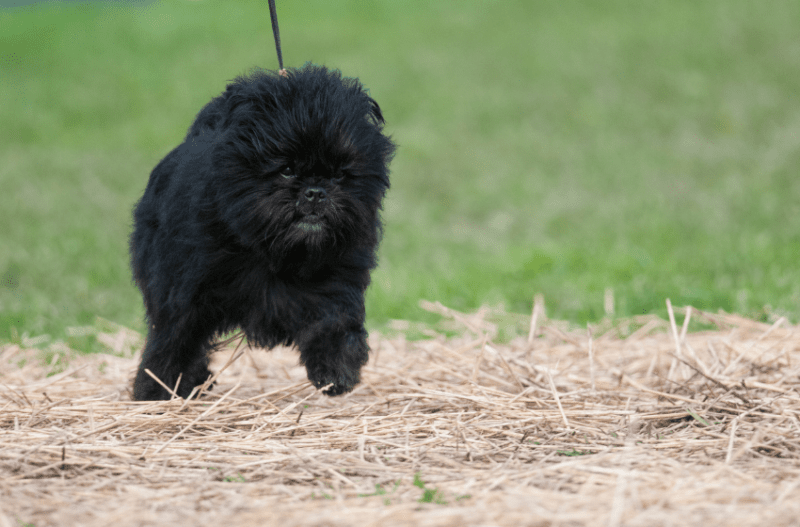
The affenpinscher has a striking resemblance to… Chewbacca. Yep, the Wookiee from Star Wars. So, you can already guess that this fluffball has a charming, entertaining personality.
Affenpinschers reach 11.5 inches tall and weigh around 7 to 10 pounds (not exactly Wookiee size!). They’re devoted to their owners, but they can be strong-willed and difficult to train. They aren’t a great choice for first-time owners and do best with an experienced pet parent.
24. Italian Greyhound
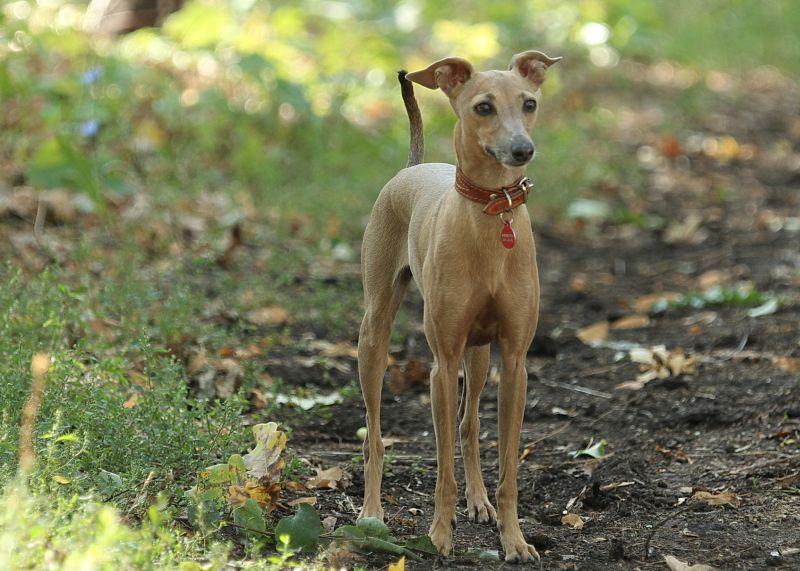
Italian greyhounds are adorable pups with sleek coats and docile personalities. They get along well with other dogs, are lovey-dovey with their families, and love to hog their owners’ laps. Most Italian greyhounds stand 13 to 15 inches tall at the withers.
Italian greyhounds have short coats and don’t require much grooming. However, they aren’t well-suited for cold weather and should be wrapped up warm in the winter months.
25. American Hairless Terrier
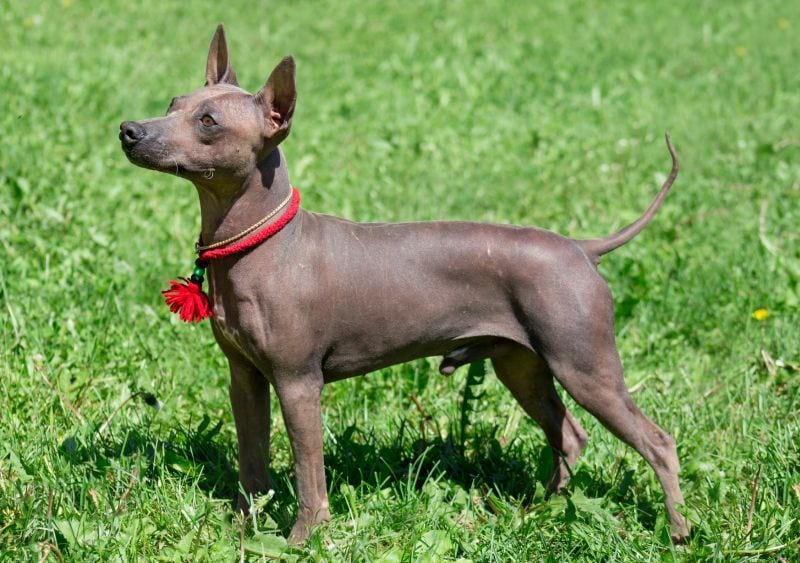
This isn’t a breed for everyone — mainly because they don’t sport your typical “doggy” looks. But hey, in our opinion this is just part of their charm! There’s something about these hairless dogs you just can’t help but love. Plus, they’re great for people with allergies, and grooming them is a total breeze.
American hairless terriers are alert, inquisitive, and energetic. They require at least an hour of exercise per day in the form of walks, hikes, and active games to stay healthy.
26. Bolognese
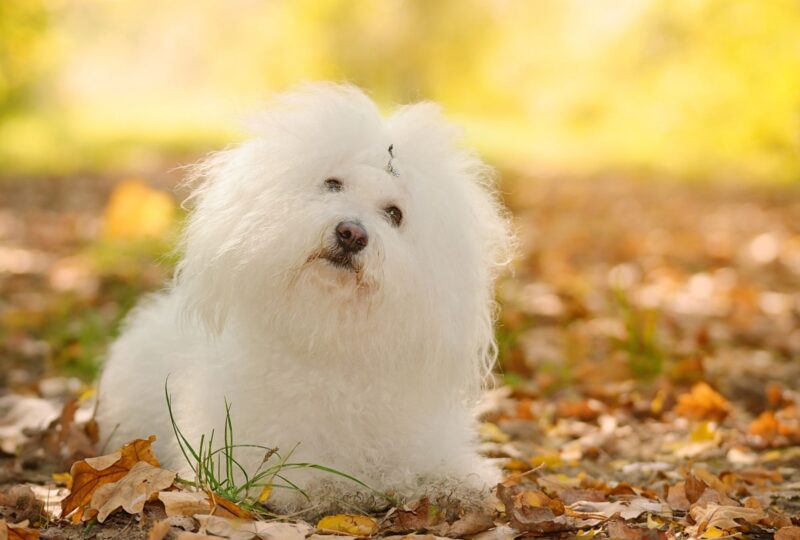
Yes. We know what you’re thinking. And no, this woofer isn’t an Italian dish. However, he does hail from Italy and was particularly popular among nobility! Jokes aside, the Bolognese is devoted, calm, and intelligent. He sports a gorgeous, white fluffy coat and reaches 12 inches tall.
Bolognese dogs are incredibly adaptable and can suit most lifestyles. However, they’re prone to separation anxiety and struggle when left alone for long periods. They would make a pawfect “office buddy” for those who work from home!
27. Chinese Crested Dog
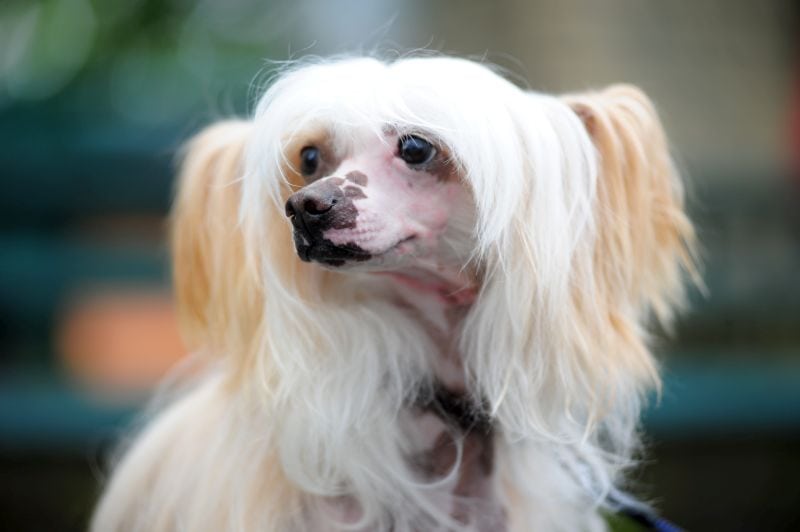
This is another “hypoallergenic” dog breed who’s ideal for allergy sufferers. He’s a lot calmer than the American hairless terrier, making him better suited to families who prefer quiet nights to grueling hikes.
Do keep in mind that there are two recognized coat types: hairless and haired. You’ll want to opt for the former if you’re allergy-prone, but haired (“powderpuff”) Chinese crested dogs are just as cute if allergies aren’t a concern.
Chinese crested dogs are incredibly affectionate and devoted to their humans. They’re also considered to be one of the longest-living breeds in the world, with an average life expectancy of 13 to 18 years (that’s equivalent to around 91 to 126 in human years!).
The Advantages and Challenges of Small Dog Breeds

Small dogs are generally more manageable than large dogs, but that doesn’t mean caring for them is a walk in the park; they come with their own unique set of challenges that, for some people, might be even more difficult to manage than the challenges involved with large breeds.
We’ll highlight the advantages and challenges of small dog breeds below to ensure you can make an informed decision when choosing a forever best friend.
The Advantages of Small Dog Breeds

Small dogs offer just as much love, affection, and joy as big dogs. They also have plenty of advantages over their larger counterparts, including:
- They’re easier to groom. Less fluff means less brushing! Small dogs are generally much easier to brush, clean, and trim, which makes grooming a relatively quick and laidback process. Small dogs also tend to shed less than large dog breeds, which your couch and brand new clothes will definitely appreciate.
- They’re easy to transport. Cramming a giant breed into a compact car is… a challenge, to say the least. But with small dogs? They hop in, get settled, and enjoy the ride without you having to move around your stuff or remove any seating. Many airlines also allow small dogs to travel with you in the cabin (if you have the necessary health documents and pay the pet fee).
- They have longer life expectancies. In general, small dogs tend to have longer average life expectancies than big dogs. Certain small dog breeds (like Chinese crested dogs) can even live for up to 18 years with good breeding and proper care.
- They produce smaller number twos. Yes, it may not be the most “sanitary” topic to discuss, but there’s no debate that small breeds produce smaller, more manageable poos than large woofers. If dog waste is your worst nightmare, you’ll definitely want to steer clear of the likes of Labradors and Newfoundlands.
- They aren’t space hogging. This isn’t to say small dogs won’t hog your lap, but it’s a lot less stifling than a woofer hogging your lap, the couch, and your whole bed. Dog care supplies, such as bedding, crates, and food bowls, also won’t take up as much space in the home. Plus, small pups can happily live in compact apartments.
- Small dogs are more affordable. Small dogs are generally cheaper to care for than big dogs. They require less food, and the supplies they need — including grooming tools, crates, toys, and bedding — are all a lot cheaper.
The Challenges Small Dog Breeds Present

Small dog breeds have plenty of perks, but it’s important to be aware of the challenges they present too. Depending on your lifestyle and needs, you may actually be better off with a large breed.
- Small dogs are more fragile. While big dogs can tolerate roughhousing, small dogs have fragile bodies that are prone to injuries. They aren’t suitable for families with boisterous kids and can’t partake in rough, vigorous activities that put a strain on their delicate joints. Small dogs also can’t perform certain service tasks like wheelchair pulling and deep pressure therapy (DPT), which may be a factor worth considering if you’re after a service dog.
- They’re less active. This isn’t to say that you can’t find an active small dog —- breeds like the Jack Russell terrier are energetic and love to exercise and play. However, even the most active small dog can’t compare to the likes of Siberian huskies, border collies, and Australian shepherds, who are capable of exercising for hours on end.
- Some small breeds are prone to serious health complications. Unfortunately, several small breeds with flattened faces suffer from Brachycephalic Obstructive Airway Syndrome (BOAS). This can be emotionally difficult (and costly) to manage.
- Small dogs are harder to train. This isn’t exactly true — it would be more accurate to say that it’s easier to overlook bad behavior in small dogs because of their small size and adorable looks. If bad behavior is left unchecked, this can lead to small dogs developing the renowned “Napoleon syndrome.” It’s important you take training seriously and be consistent, no matter how “cute” these woofers look!
Small Dog Breed FAQ: Your Questions Answered!
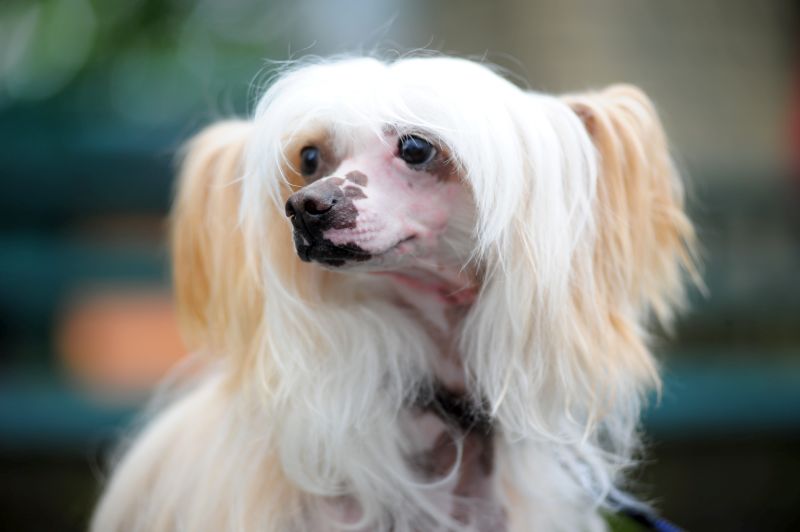
Still not sure if a small dog is right for your home and lifestyle? Don’t sweat it. Below, we’ve addressed some common questions about small woofers to give you a better idea of what to expect and what breeds to consider.
What is the best small breed dog to own?
There is no clear answer to this. The best “breed” will ultimately depend on your needs, lifestyle, and home situation. For example, if you lead an active lifestyle then the “best” choice would be a small dog who can match your energy level, like the American hairless terrier. If you’re laid back and prefer a quiet night in, then a cuddly lapdog like the cavalier King Charles spaniel would be much better suited.
What is the most common small dog breed?
According to the American Kennel Club, the most popular small dog breeds are French bulldogs, beagles, dachshunds, Pembroke Welsh corgis, and yorkies. You can check out the AKC’s full list here.
What dog breed is smallest?
The title of the smallest dog breed goes to the feisty Chihuahua, who stands only 5 to 8 inche tall. Some other top contenders include the Pomeranian, who reaches 7 inches tall and weighs between 3 and 7 pounds, and the Maltese, who weighs under 7 pounds. The Pekingese is also a teacup-sized woofer, standing up to 9 inches tall.
What is the cleanest small dog?
The cleanest small dog breeds include the American hairless terrier, basenji, and Chihuahua. All of these breeds shed minimally, keep themselves clean, and have low-maintenance grooming needs.
What small dogs are easy to maintain?
While each dog comes with their own unique set of challenges, it’s undeniable that some breeds are better suited to first-time owners than others. The cavalier King Charles spaniel and papillon are great options since they’re easy to train and can adapt to a range of lifestyles. Dogs such as American hairless terriers, Italian greyhounds, and Chihuahuas also have relatively low-maintenance grooming needs.
Small dog breeds are downright adorable (and a lot of them know it!). They’re essentially “forever puppies,” with endearing expressions, tiny paws, and a love for being your personal lap warmer. While small dogs can be more manageable than large breeds, caring for them does come with some challenges that owners should consider and accommodate.
What’s your favorite small dog breed? Do you know another small pup we haven’t mentioned here? Let us know in the comments down below. We’d love to hear from you!
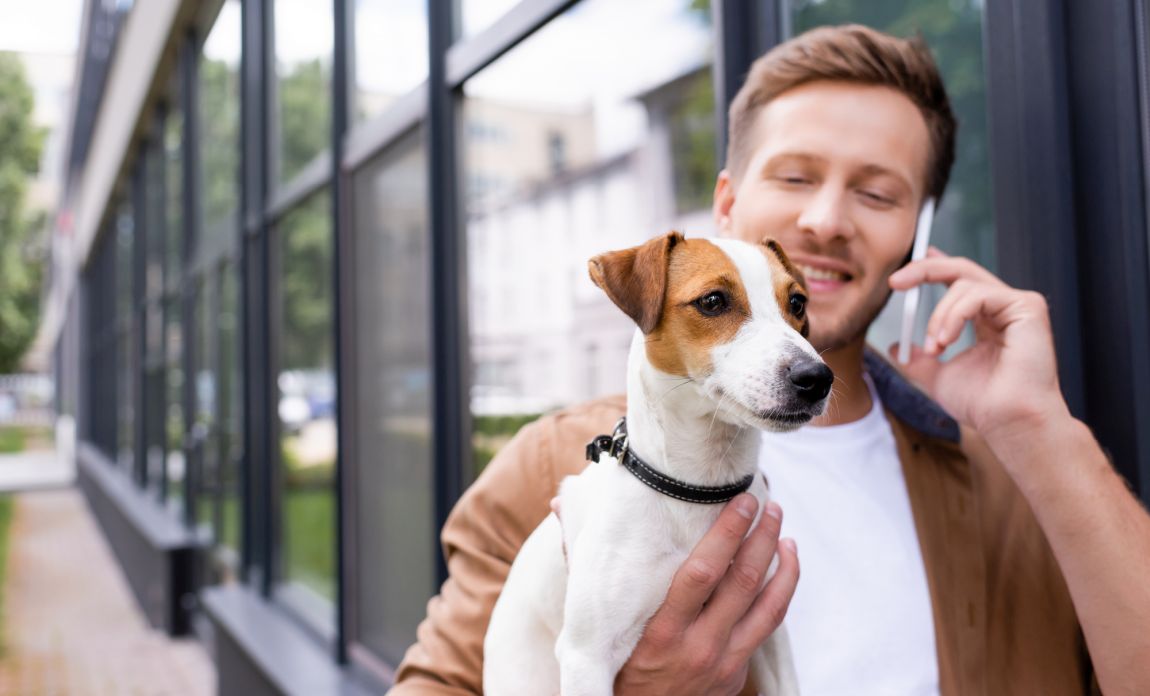

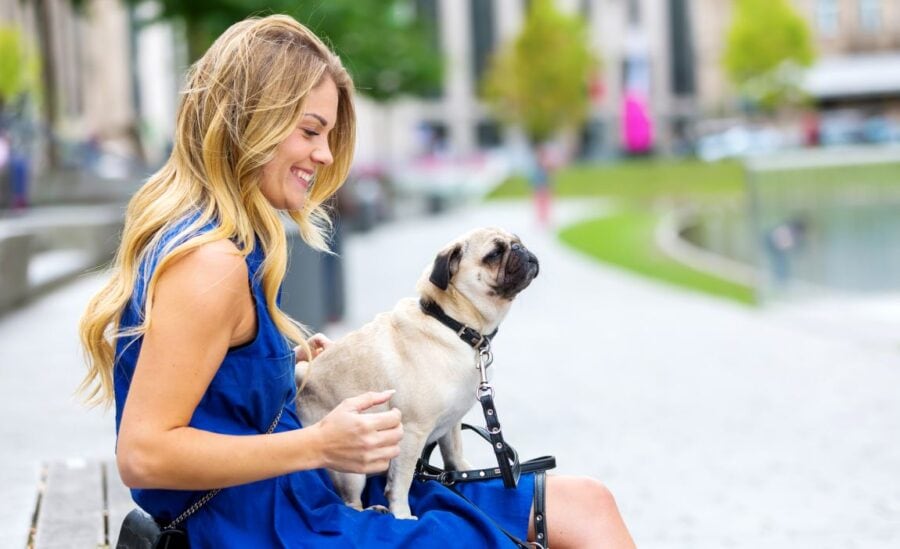



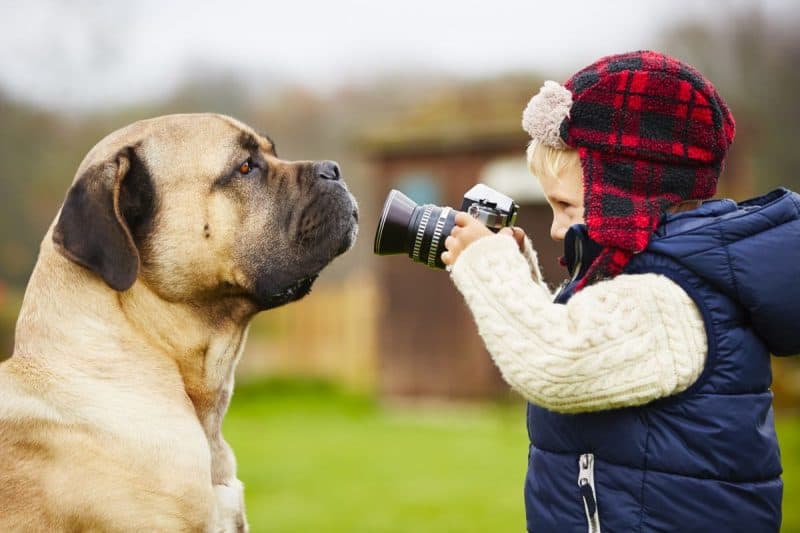
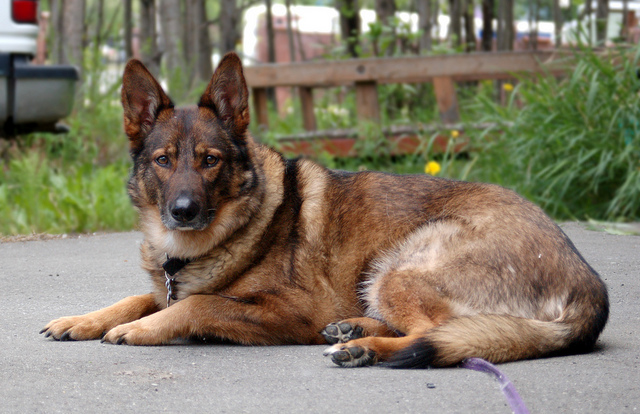
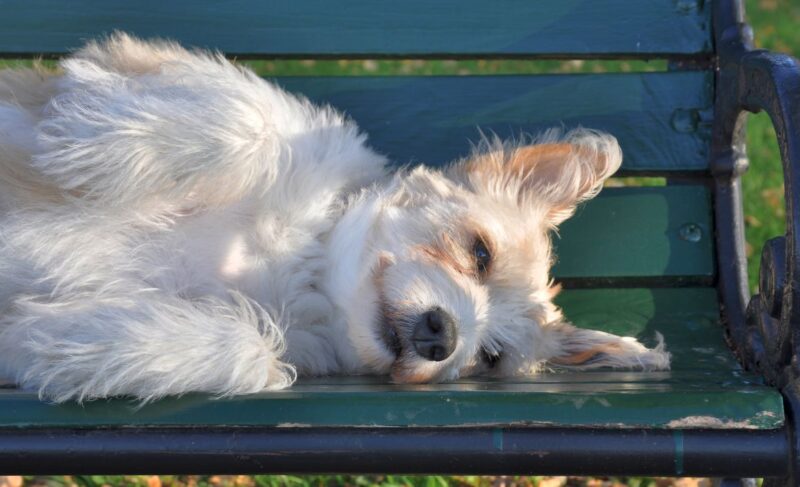
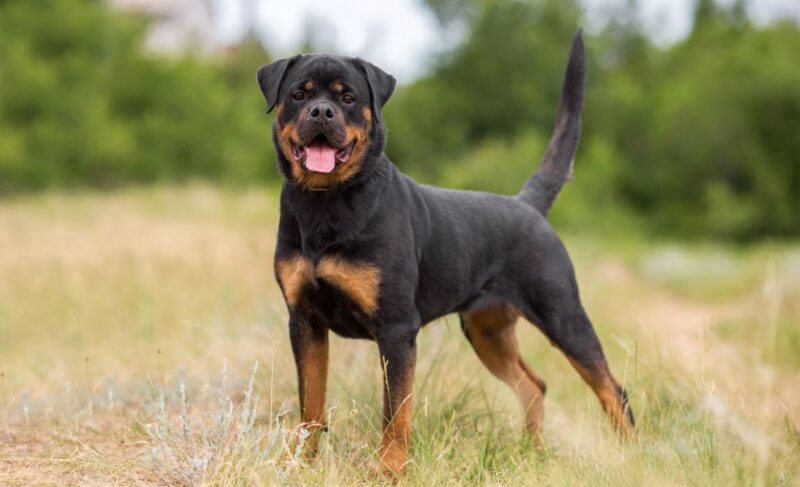
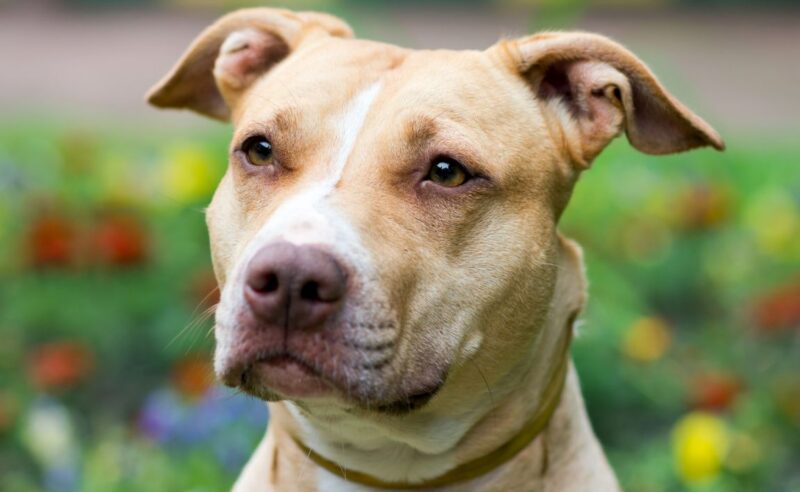

Leave a Comment